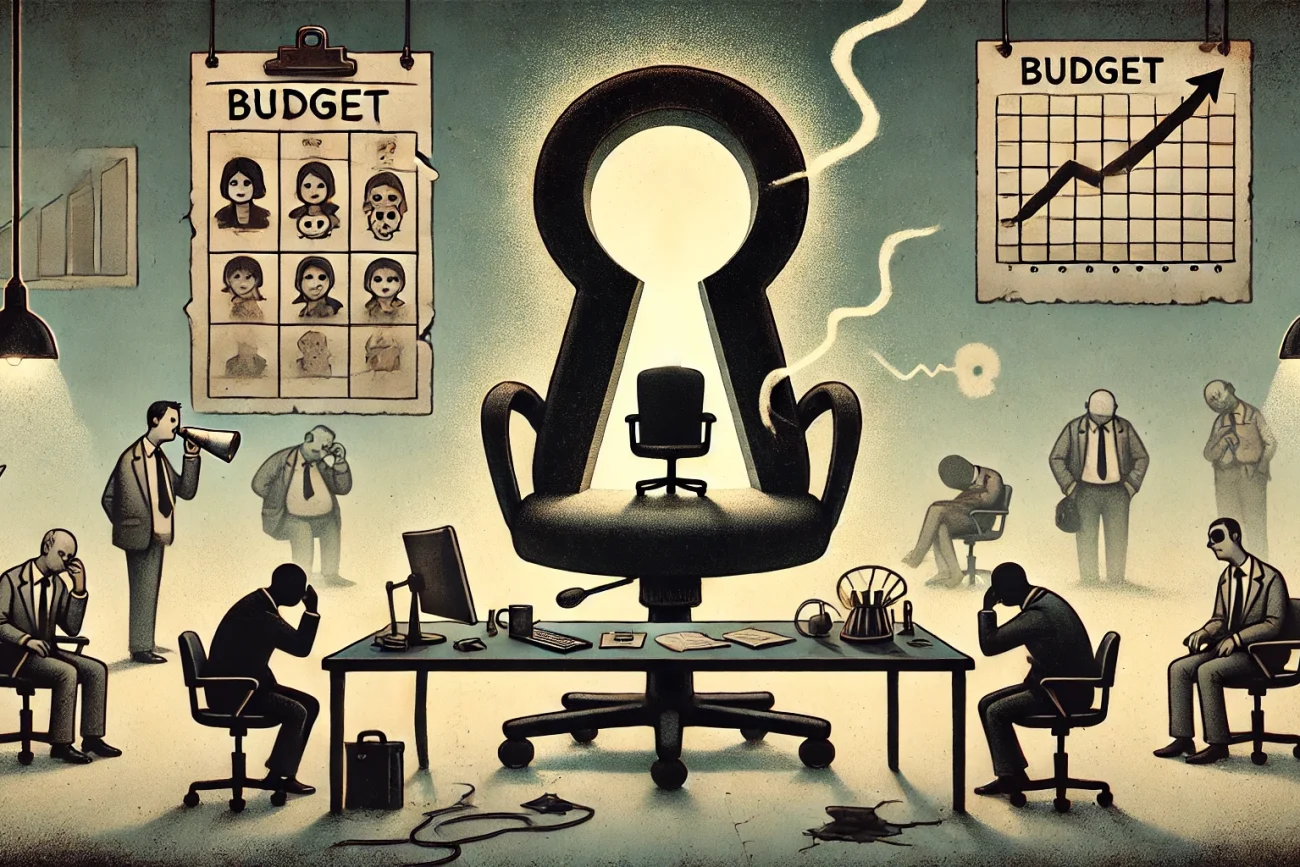Organizations are under pressure to control spending, leading to tightened headcount approvals, prolonged backfill timelines, and hiring freezes. On the surface, these measures can appear financially sound. Every month a role remains unfilled seems to reduce overhead, creating the illusion of fiscal discipline and short-term savings. But the cost of vacant positions is often overlooked, and beneath that surface lies a more complex and costly reality.
What many leaders overlook is the true cost of vacant positions. These are not neutral gaps in a spreadsheet. They are points of friction in your operating model, often leading to reduced output, delayed projects, weakened team morale, and eroded customer experience. When key functions stall or distribute unevenly across remaining team members, performance suffers—and so does retention.
Whether the vacancy is at the junior level or in the C-suite, the impact extends beyond operational disruption. Over time, it becomes strategic. Unfilled roles degrade momentum, dilute accountability, and in some cases, cost far more than the salary you thought you were saving.
This article examines the hidden costs of vacant jobs, reframing delayed hiring not as a responsible decision, but as one that can quietly undermine growth, culture, and performance—often when it matters most.
"In business, every action has an equal and opposite reaction. Delaying a hire burdens other parts of your organization until it breaks."
Vacancy is Not Free: The Myth of Cost Avoidance
The misconception that leaving a position unfilled equates to saving costs overlooks fundamental aspects of organizational dynamics and productivity. Employees are more than mere budget items; they form essential components of a company’s operational framework, contributing to team cohesion and organizational effectiveness. For instance, consider a mid-level software engineer earning $100,000 annually. Initially, the decision to keep this role vacant might seem financially prudent, potentially saving around $8,300 per month in direct salary expenses. However, this simplistic view ignores the broader implications.
In practical terms, a vacant role creates ripple effects that disrupt normal operations. Workload is often redistributed among existing team members, leading to overburdening and increased stress. Projects that rely on the expertise and contributions of the vacant role are either delayed or scaled back, affecting timelines and deliverables. Moreover, critical initiatives such as sales enablement, customer retention strategies, or internal tool development may suffer, resulting in missed opportunities for revenue generation or efficiency gains.
The true cost of vacant positions becomes evident when considering the cumulative impact: increased project delays, decreased employee morale, heightened customer dissatisfaction, and the eventual strain on recruitment efforts. Even at the junior and mid-levels, where roles may seem more interchangeable, the ongoing operational disruptions and missed opportunities can translate into significant monthly costs ranging from $10,000 to $20,000—far exceeding the apparent salary savings.
This analysis challenges the simplistic notion that delaying hiring is a prudent financial strategy. Instead, it underscores the hidden costs and long-term consequences of leaving roles unfilled, emphasizing that strategic workforce planning should prioritize continuity, productivity, and sustainable growth over short-term financial gains.
Seniority Amplifies the Cost Curve
As organizational hierarchy ascends, the repercussions of leaving key positions vacant become increasingly profound and costly. At the C-suite level, a vacant role isn’t merely an absence in the organizational chart; it represents a strategic void that reverberates throughout the entire company. C-suite executives are pivotal in steering corporate direction, allocating resources, and making decisions that shape long-term success. When these responsibilities go unfulfilled or are inconsistently managed, the repercussions can be severe.
Strategic misalignment is one of the immediate consequences. Without clear leadership at the top, organizational goals can drift, initiatives lose momentum, and the company’s competitive edge diminishes. This lack of direction not only affects internal operations but also impacts external stakeholders, leading to slowed time-to-market and diminished investor confidence. Moreover, talented employees, particularly high performers, may perceive the absence of strong leadership as a signal of instability, prompting them to seek opportunities elsewhere.
The cost of leaving job positions open at the executive level escalates exponentially over time. Unlike mid-level roles that may stabilize in cost after initial disruptions, the absence of C-suite leadership can lead to prolonged strategic paralysis and operational inefficiencies. Financially, while delaying the filling of a C-level role might initially save on compensation costs—potentially $150,000 over six months—the broader impact could result in staggering financial losses ranging from $500,000 to $1 million. These losses stem from missed strategic opportunities, failed deals, decreased employee retention, and the erosion of market position.
This analysis underscores the critical importance of timely executive recruitment and succession planning. Organizations must recognize that the true cost of vacant positions at senior levels extends far beyond salary savings, impacting overall organizational health, strategic momentum, and long-term viability. Strategic leadership continuity is not just about avoiding immediate expenses; it’s about safeguarding against profound and long-lasting operational and financial consequences.
The Domino Effect: How One Vacancy Becomes a Culture Problem
Beyond the financial metrics of spreadsheets and salary data, the impact of leaving positions vacant extends deep into the social and cultural fabric of an organization. When a key team member departs and their role remains unfilled, it sends ripples of uncertainty and concern throughout the workforce. Employees, perceiving instability or indecision in leadership, may find themselves shouldering additional responsibilities to compensate, often leading to burnout and diminished morale.
In environments like startups or scale-ups, where cultural momentum is crucial for growth, the absence of a single leadership figure can trigger a cascade of negative consequences. Project delays stemming from the vacancy can frustrate employees, increasing the likelihood of attrition as talented individuals seek more stable environments. This turnover then exacerbates the vacancy issue, creating a detrimental cycle of organizational slowdown.
Even seemingly minor vacancies, such as in customer support roles, can have disproportionate impacts. Failure to fill a support position can result in service tickets accumulating, response times deteriorating, and ultimately, customer satisfaction declining. The loss of just one key renewal or the impact of a negative review can outweigh the salary savings accumulated over several months.
The repercussions of a vacancy are not confined to operational outputs alone; they permeate the emotional landscape of the workplace. Employees’ engagement and motivation suffer as they grapple with increased workloads and uncertainty, factors that are not only challenging to repair but also costly in terms of productivity and organizational resilience.
Addressing the hidden costs of vacant jobs requires more than a financial calculus—it demands a holistic understanding of how vacancies impact team dynamics, culture, and customer relations. Effective workforce planning should prioritize timely recruitment and strategic staffing decisions to mitigate these broader, often intangible, yet profoundly impactful consequences.
“Saving Money” by Delaying Hiring is Often Penny-Wise, Pound-Foolish
Viewing the cost of vacancy solely through a financial lens is akin to seeing only part of the iceberg above water—it disregards the substantial, often hidden impacts lurking beneath the surface. While it’s true that hiring entails immediate costs such as salaries, benefits, and onboarding expenses, the consequences of leaving a role vacant can far outweigh these apparent savings.
The hidden costs of vacant jobs manifest in various forms that extend beyond immediate financial metrics. Opportunity costs, for instance, represent revenue that could have been generated if projects had not been delayed due to understaffing. Productivity losses occur when critical tasks are postponed or completed inadequately, impacting operational efficiency and customer satisfaction. Moreover, prolonged vacancies can tarnish a company’s brand reputation through lapses in customer service or delayed responses, leading to customer dissatisfaction and potential attrition.
Equally significant is the impact on team dynamics and morale. Stressed or overburdened employees, grappling with increased workloads due to unfilled positions, may become disengaged or seek opportunities elsewhere, resulting in talent degradation and further recruitment challenges.
Delaying hiring, therefore, isn’t merely a short-term financial decision but a strategic misstep that can erode long-term organizational health and performance. Leaders should shift their perspective from viewing hiring as a cost center to recognizing it as an investment in future growth and sustainability. By reframing the discussion around what each role enables the organization to achieve and the critical paths stymied by delayed hiring, leaders can uncover the true costs of inaction—revealing that delaying recruitment isn’t saving money but silently draining it from multiple dimensions of organizational effectiveness and success.
The concept of opportunity cost underscores a critical truth in organizational decision-making: what you don’t see can often have the most profound impact. Unlike direct expenses that appear on financial statements, opportunity costs operate invisibly yet pervasively across every aspect of business operations. They manifest in diminished team morale as employees contend with increased workloads and uncertainty stemming from unfilled roles. This, in turn, affects the speed and agility of project execution, delaying critical initiatives and potentially reducing the return on investment from strategic endeavors.
Moreover, the absence of timely hires can erode stakeholder confidence, affecting relationships with investors, clients, and partners. While leaving a role vacant may initially seem financially prudent, it often leads to long-term setbacks and missed opportunities for growth and innovation. In business dynamics, as in physics, every action triggers a reaction: delaying recruitment places burdens elsewhere in the organization, straining resources and compromising effectiveness.
To sustain a lean, effective organization poised for growth, leaders must shift from asking how long they can delay filling a role to assessing the daily costs incurred by postponing recruitment. Recognizing the true cost of vacant positions involves understanding not just immediate financial implications but also the broader impacts on operational efficiency, strategic momentum, and overall organizational health.

